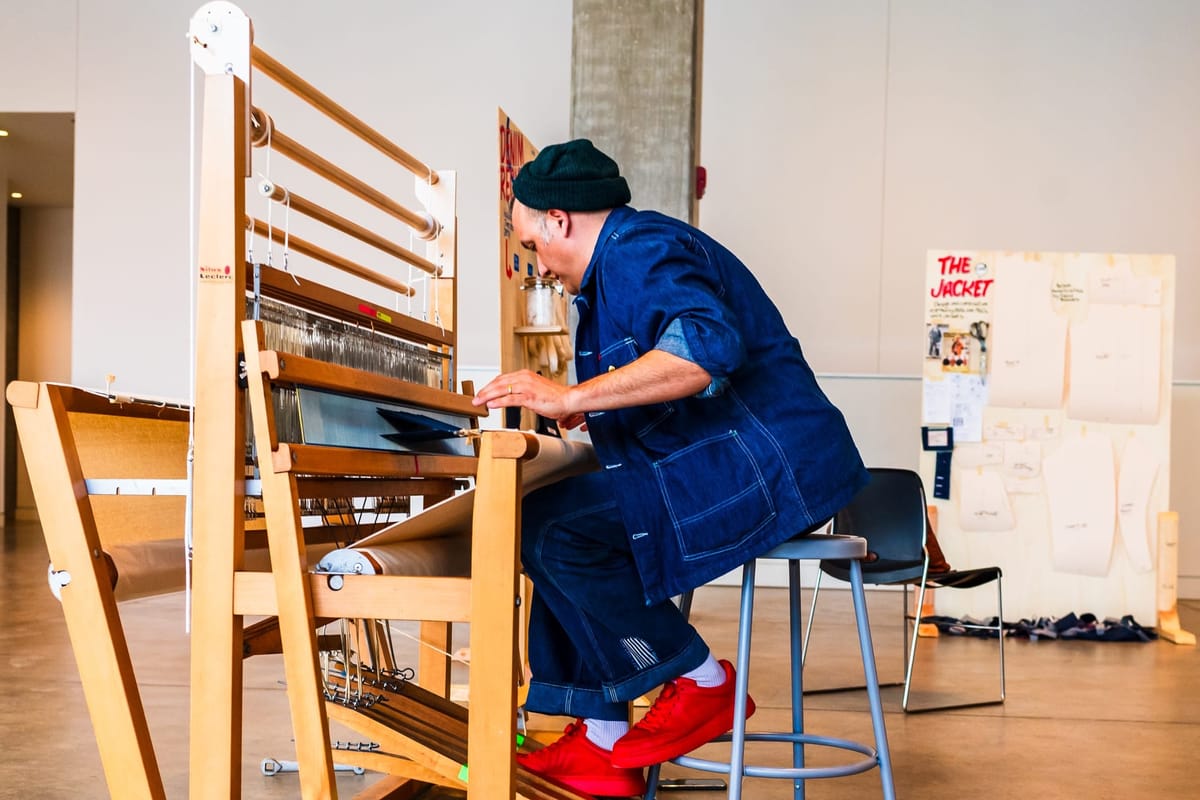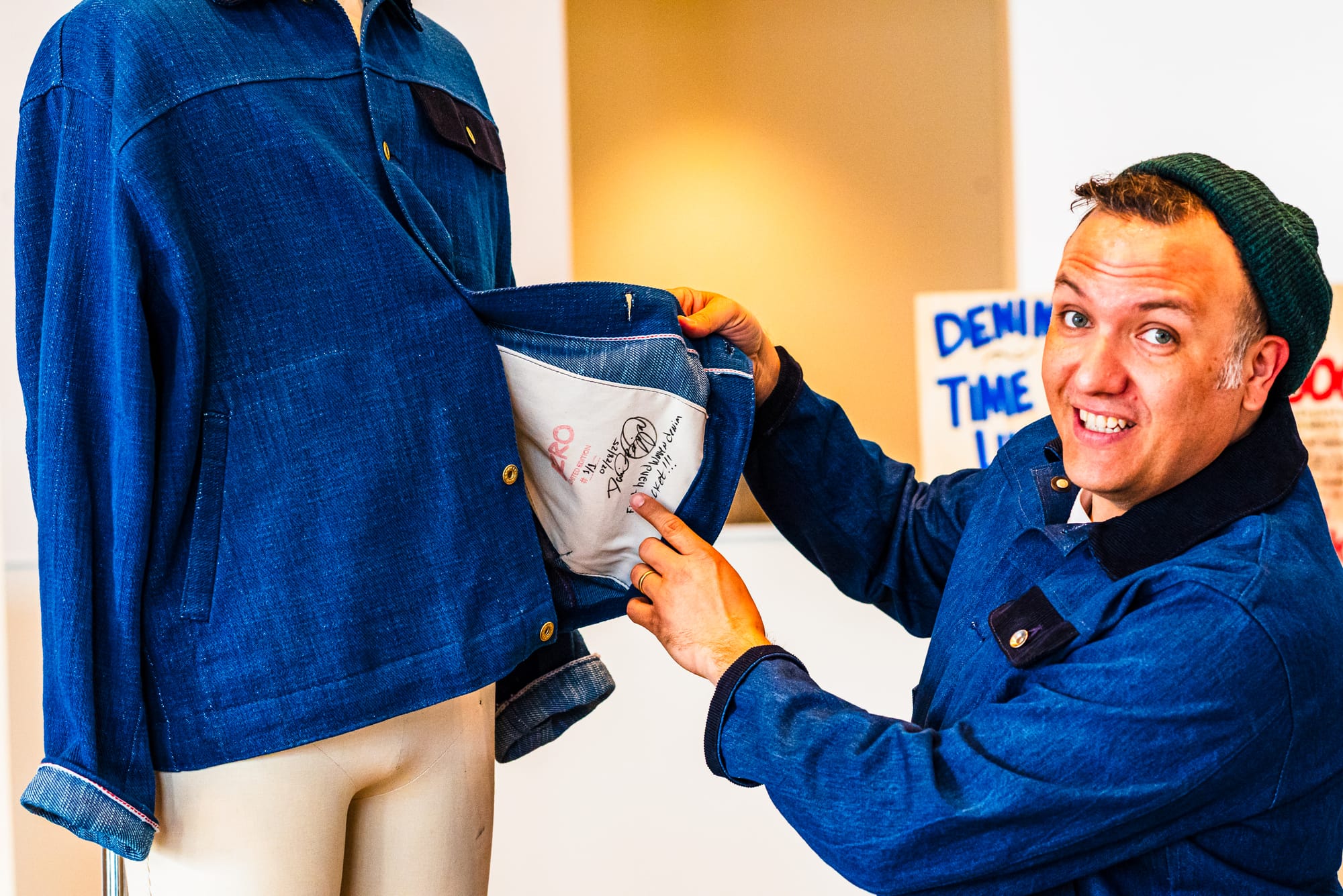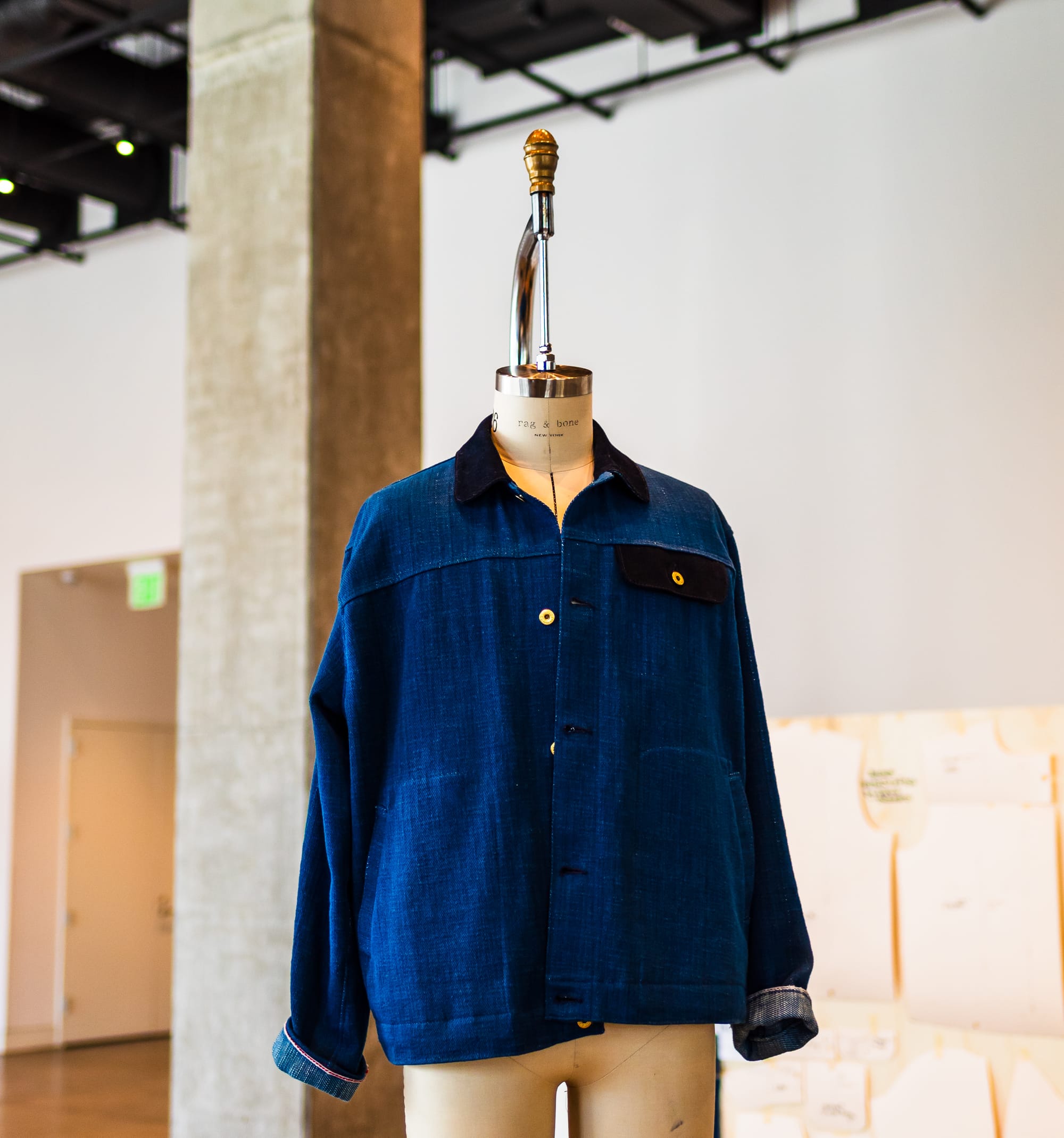
David Bizzaro has plans — big plans. They include creating a nationally known brand, leading a comeback of the garment industry in Tulsa and saving the Earth from the environmental costs of fast fashion: “Every seven minutes there is a pile of clothing that’s thrown away that’s the size of Mount Everest,” he says.
That’s a lot to ask from a former “Muppet Show” and “Sesame Street” puppeteer. But with the sheer excitement and enthusiasm Bizzaro carries with him to each project, the first-generation Salvadoran American makes it sound doable.
“Oklahoma once had a thriving garment industry, including a Wrangler Jeans factory in Guthrie and a garment factory in Tulsa’s East Village,” Bizzaro announces. “I seek to rekindle the public memory of, and introduce a new generation to, a time when we were intimately connected to production.”
In 2023 Bizzaro and his wife Cassandra started the denim-based clothing line BZRO. While their headquarters is currently located in what used to be the library in their xx room apartment and the products are only sold on their website, the venture has become more than just another way for a creative to express himself; it morphed into something much bigger.
“The idea was always to make something quality and long-lasting, for sure,” Cassandra says. “But then as (David) started finding these vintage pieces that look like they could have been made yesterday, and then as we learn more about specifically how denim holds up over time and the history — so we’re not even inventing something new — we’re actually going back to the source. So that’s actually the foundation of the company. I’d say it is understanding where this all comes from and hopefully carrying it on for the next, for this generation and beyond.”

In the process of going down the rabbit hole of denim, Bizzaro learned to weave and hand-dye his own clothing, bought a vintage loom off social media and may have uncovered the truths that debunk some well-circulated myths regarding the origins of fabric.
Before he created BZRO, though, the Emmy-winning puppeteer was not really a fan of denim. It wasn’t that he had anything against it; he just saw it like most people, as a fashion trend that went in and out of style.
“I wasn’t a big denim head at all,” Bizzaro says. “I didn’t know the denim head culture. I didn’t know that there was this whole, ‘It’s got to be salvage or death’ [mindset]. And it’s only because I am not somebody who gravitates towards trends. I’ve never been that way.”
But after going through different options to start his clothing line with, Bizzaro landed on denim.
“I was researching what materials should I work with: What should I be making? And I did start to see that these guys, mostly men, were wearing full denim outfits — denim jeans, denim shirts, denim jackets and hats. And there was this whole culture around it. I was like, ‘Well, there’s a market that could be interesting, because I know I can make those garments. I know that denim is incredibly versatile.’ And that’s what first drew me to denim specifically.”
Bizzaro envisioned jackets, jeans, totes and hats in different dyes and styles. He was hooked.
It was also the choice of denim that led to Bizzaro’s breakthrough with the Artist Creative Fund. He had applied for the Tulsa-based grant in previous years and been turned down, but that changed in 2024.
“We’d had our eye on it before, but it was for puppetry. And at the time we were like, ‘We need some income coming in. Maybe we could apply for this for some puppet something,’” Bizzaro recalls. “So, they have these amazing info sessions where they’re telling you what they’re looking for, how to apply, and they’re teaching you all for free before you.”
But as they were scouring the categories in which to enter Bizzaro’s clothing, nothing felt right. However, when he saw folk art, the proverbial light bulb came on.
“I’m like, ‘Well, isn’t denim a folk art? And I started thinking about the history that I’ve been learning and researching, and I was like, ‘Wait, yeah, it is,’” Bizzaro says. “It’s actually an American folk art and denim outfits are folk wear, technically. I quickly looked up the definition of folk wear just to make sure I was right. Folk wear is a type of clothing or garment that is made for a culture, specifically for the working class. That’s what folk wear is. Folk wear eventually becomes something people wear, as like a ceremonial [garment] or what have you. But it generally starts as the clothing of the working class. I was like, ‘Well, that’s what this is.’”
The Artist Creative Fund agreed. Bizzaro was one of 20 applicants awarded $10,000 to test ideas, explore collaborations and build skills in the process of generating innovative creative work. It allowed him to be fully devoted to building his BZRO brand and not have his growing family be fully dependent on Cassandra’s income from her full-time job.

“We propose we’re going to weave some denim. We’re going to hand-dye the yarns with natural indigo and we’re going to make a jacket,” says Bizzaro. “And at the end of it, which is a part of the grant requirement, they require you to host an event that’s free for the public in Tulsa. The goal of the grant is to lift the artist community here, and not just the artist community, but Tulsa’s community as a whole.”
In early March BZRO rented out the ground floor of the still-under-construction OKPop Museum (422 N. Main) in downtown Tulsa and hosted an exhibit titled “Work/Wear: How Tulsa Can Be the Next Fashion Capital.”
I seek to rekindle the public memory of, and introduce a new generation to, a time when we were intimately connected to production.” –David Bizzaro
Visitors learned the long and complicated history of denim. That includes how slaves wore the material in the 1800s and how it became a sign of resistance during the Civil Rights era. Martin Luther King Jr. was wearing a denim outfit when he was arrested in Birmingham, Alabama, in 1963 and wrote his famous “Letter From a Birmingham Jail.”
One of the highlights of the exhibit was the denim jacket Bizzaro created. It stood on display in the center of the room and had the BZRO logo emblazoned on the inside. After doing even more research, he believes it’s the only known hand-woven denim jacket made in the United States since the 1700s.
“I reached out to the Smithsonian. They have not heard of any; they couldn’t confirm that mine was [the only one], but they said, ‘We do not have any record of one being done.’ I’ve reached out to a Levi’s historian and she was like, ‘To our knowledge, this is it.’ I’m still looking and I'm reaching out to all kinds of people — weavers, historical weavers, costumers, historians — asking them that question: Has anybody done this?”
The interest in the week-long exhibit showed David and Cassandra there is a market for locally owned fashion houses like BZRO in Tulsa. They have a plan to one day move the entire vertical integration operation into one building in their city. They want BZRO to be at the forefront of bringing back the textile industry in a state that was once one of the leaders.
“There’s lots of folks here that want to see this happen here,” Bizzaro says. “And frankly, to try to do it in New York or California just doesn’t make sense. The rent is too damn high. Over here, the rent can be figured out. There’s also tons of buildings that used to be manufacturing buildings that we could just very easily get inside and get up and running instead of trying to go rent a million-dollar storefront somewhere.”
While Bizzaro still calls himself a puppeteer and actor, he looks forward to the day both he and Cassandra can be fully invested in the BZRO brand instead of burning the candle at both ends.
“We’ve thrown the candle in the fire. If I could do this forever and make a living at it and be comfortable 100 percent — because my goal my entire life has been to be able to sustain my family with my art, and I don’t care what art that is,” Bizzaro says. “It just means if I’m expressing myself and I’m having a lot of fun and joy coming out of how I’m expressing myself and my family gets to be sustained and happy and enjoy themselves, that’s what I want."

